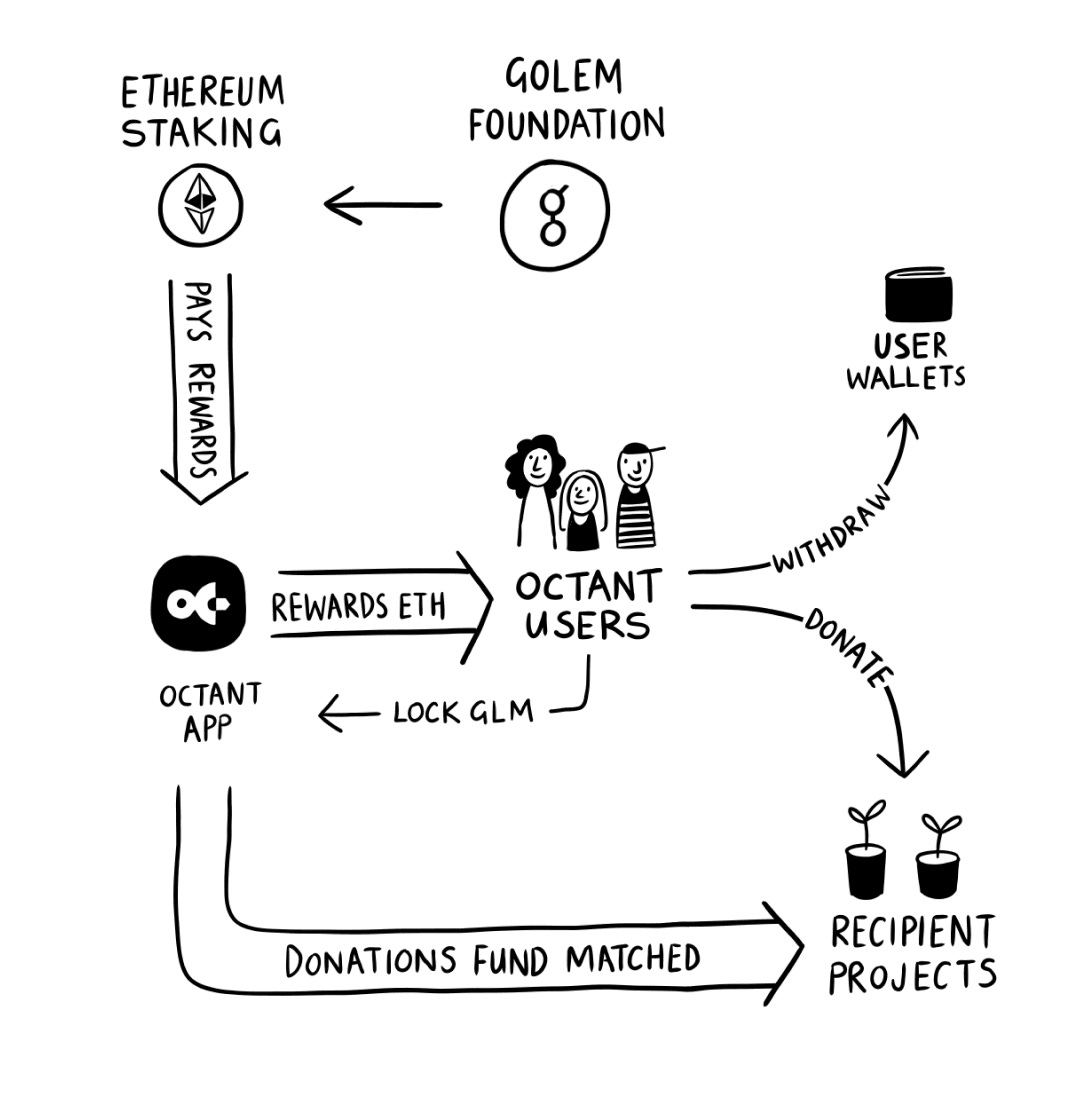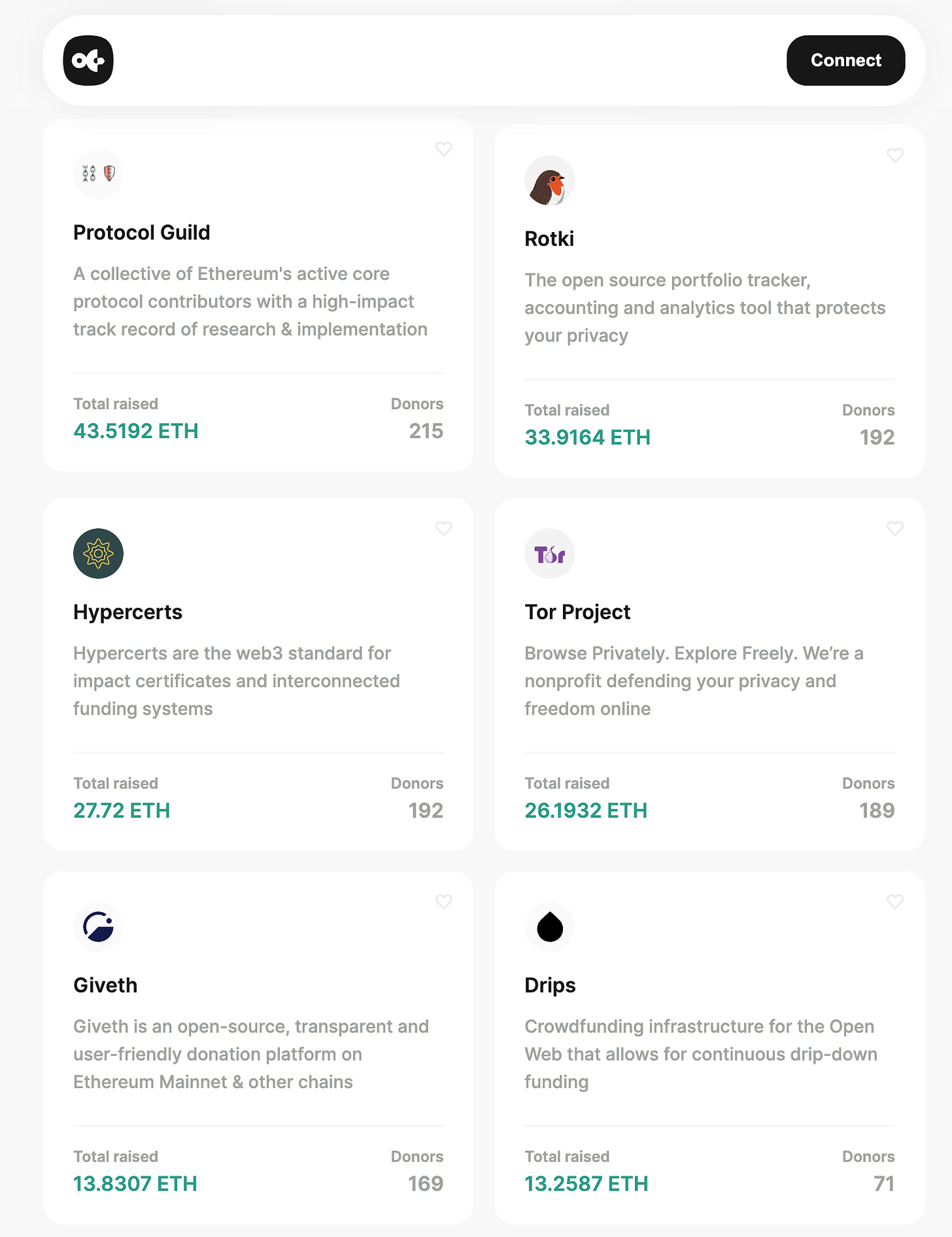GM,
Let's start with some good news! Blocktrend received 27 votes in the final round of RetroPGF3, surpassing the participation threshold of 17 votes. This is a significant improvement compared to the optimistic single vote I received when I wrote my first article1. Blocktrend is now ranked 368th overall, with a PR value of 43. This represents a considerable advancement from the PR value of 20 obtained in RetroPGF2 earlier this year—a cause for celebration!
Congratulations to everyone, as we can now look forward to receiving an OP airdrop as a red envelope after the Chinese New Year in 2024. The exact amount remains unknown until the results are announced, but I estimate that this time, we are likely to achieve Blocktrend's ideal from 2022—earning back the subscription fees2. Although members initially pay an $80 subscription fee, there is a chance to receive an OP airdrop exceeding $80. The surplus is an investment return for the public good!
This airdrop is exclusive to members, and I will distribute it based on the actual total payment amount. If you know someone who hasn't subscribed to Blocktrend yet, there's still time before the reward results are announced. Referring others to subscribe also allows you to earn an additional month of subscription. Now, let's get to the main topic.
Last weekend, the "Funding the Commons" international forum took place in Taipei. This event holds great significance for me. Over the past year, Blocktrend has actively participated in the public goods reward mechanism, achieving good results and funding, but the driving force behind the mechanism has always been unknown. "Funding the Commons" gathered people globally involved in this field and introduced me to several interesting projects that have just emerged. Today's featured project, Octant, left a lasting impression on me, evoking memories of my youth when I first started writing about Blocktrend in 2017.

ICO Fundraising
All public goods fundraising mechanisms aim to address two main questions: where the resources come from and how they are allocated. Different mechanisms yield different results, as seen in Gitcoin Grants, Optimism RetroPGF, and Hypercerts3. Despite Blocktrend ranking high on Gitcoin, it doesn't necessarily guarantee similar popularity in RetroPGF. Octant, a newly established mechanism in August 2023, operates with a distinct model.
Octant's funding source is a sum of 100,000 ETH, currently valued at over 200 million USD. Octant utilizes these 100,000 ETH for Proof of Stake (PoS) staking, generating annual returns of thousands of ETH (approximately several hundred million TWD). These returns serve as rewards and are distributed through a novel mechanism to eligible projects.
When people first encounter public goods fundraising, they often inquire about who is funding it and what benefits they gain from it. In the physical world, corporate donations can be tax-deductible and enhance the company's image. However, Octant, relatively unknown in the crypto sphere, raised the question of where the 100,000 ETH originated. Surprisingly, Octant's funds come from an ICO in 2016:
Octant is led by the Golem Foundation, an organization that evolved from the Golem computing power-sharing project.
Perhaps the veteran members of Blocktrend might recall (though I have forgotten), I introduced the Golem project back in April 20184. At that time, I referred to Golem as the "Airbnb of computing power markets." Users with idle computer processing power could rent it out through Golem and earn GLM tokens (formerly GNT tokens). Conversely, those in need of temporary computing power for experiments, model runs, or 3D rendering could purchase GLM and rent computing power from others.
Golem issued GLM tokens in 2016, raising funds from the community at a rate of 1 ETH for 1,000 GLM. Ultimately, Golem raised 820,000 ETH, making it one of the most notable projects of that year. GLM tokens were required for using Golem's computing power-sharing service, and their price fluctuated based on market demand.
However, even I have forgotten about writing the Golem article, indicating how obscure the product has become. The GLM-to-ETH exchange rate is now only a tenth of what it was back then. If you were a GLM investor from that period, would you cut your losses and exit, or would you continue to wait? Octant is designed to cater to the latter scenario. The Golem Foundation is using 100,000 ETH from its wallet to reshape the token economy, simultaneously transforming into a new patron for public goods.
Participatory ETH Staking Rewards
Previously, holding GLM only served one purpose: using it to rent computing power on the Golem platform. However, with Octant, GLM holders now have the option to stake their GLM and receive ETH rewards. The operational model of Octant is straightforward, as illustrated in the diagram below. The Golem Foundation has allocated 100,000 ETH for Ethereum PoS staking, and all earnings flow into the Octant wallet. If you are a GLM holder, simply locking your tokens enables you to proportionally receive ETH staking rewards from the Octant wallet.

Octant, however, doesn't aspire to be a passive income platform. Therefore, they deliberately require users to return to the platform every 90 days, manually deciding whether to withdraw ETH earnings or donate them. If no action is taken within the specified timeframe, the generated ETH earnings will automatically be donated to the Golem Foundation. A bit mischievous, isn't it?
Octant is a participatory public goods fundraising platform centered around the GLM token. The Golem Foundation stakes 100,000 ETH to secure the Ethereum network and periodically allocates a portion of the staking rewards to the Octant reward pool every 90 days. The Octant reward pool is divided into two parts: user rewards and matching rewards. User rewards are calculated based on time-weighted averages. The larger the amount of GLM locked, and the longer the duration, the higher the rewards. At the start of each new epoch, users have a two-week decision period to choose between claiming user rewards or donating the funds to public goods projects. Each donation is amplified through matching rewards.
Strictly speaking, Octant is a new project tailored for GLM holders. For those without GLM, earning ETH staking rewards is much simpler—just buy ETH and stake it in Lido5, Rocket Pool6, or a centralized exchange. Octant's process is “take your trousers off to fart”, with periodic visits every 90 days, or else the funds are automatically donated for charity 🤣.
However, for crypto veterans who acquired GLM with ETH in the past, Octant provides a new purpose for GLM. Although a bit cumbersome, it's still better than letting GLM gather dust in the wallet.
The donation function on the Octant platform is akin to Taiwan's "Electronic Invoice Love Code," allowing users to contribute additional funds. Octant also allocates some matching funds in response. Of course, for a project to be listed on Octant and accept donations from GLM holders, it must undergo a review process. Each community has its own definition of public goods, and platforms like Gitcoin Grants have broad standards. Initiatives such as "FAB DAO Grant is Great!" or the ongoing "g0v/Fab DAO/da0 QF Round" operate on a voluntary basis.
However, being recognized as a public good by the Octant community is no easy task. In my recent application process, I spent some time introducing Blocktrend's public goods experiment in 2023 to the Octant community, explaining the dilemma faced as an author and media operator between content openness and exclusivity. Octant's standards for public goods are quite rigorous. If I can successfully persuade the community to support and have Blocktrend listed as a donation recipient on Octant, it will be another form of affirmation! Of course, it would also be the first Chinese project on the platform 🎉.

Sweet Burden
While chatting at the Funding the Commons event, Octant's employees joked that having too much ETH is their "sweet burden".
In the past, when ICO projects raised a substantial amount of ETH and temporarily didn't use it, the ETH would sit quietly in wallets, with the only relief being that it wasn't stolen by hackers. However, since Ethereum transitioned from Proof of Work (PoW) to Proof of Stake (PoS), projects can now send these ETH to work and generate income. As a result, they discover that their original funds are still intact, and more money is coming in!
Initially, I thought Jacky's sharing about ApeDAO at the member gathering was an isolated case7. Now, I realize that there might be a group of people grappling with the constant influx of money. As a funding applicant, apart from diligently managing Blocktrend, I initially felt a bit conflicted, thinking it was somewhat awkward to take other people's money. However, in reality, the giver and receiver should be equal, both working to solve each other's problems.
Additionally, I believe Octant represents a new direction for ICO star projects from previous years. Many ICO projects struggled to make progress and found themselves in a situation of sitting on a pile of money—abundant in funds but uncertain about how to use the remaining funds. Projects like EOS8 recklessly spent money on media purchases, and Aragon recently announced dissolution and refunds. In contrast, Golem's redirection of funds into public goods is more constructive.
The bull market for builders has arrived! I recommend everyone to pick their side projects and try applying for any form of public goods fundraising. It's like creating a wallet back in the day—seems troublesome at first, but once you get hands-on, you'll realize it was just a self-imposed fear! If you already understand the difference in perception between using and not using a wallet for Web3, why not try applying for public funds?
Blocktrend is an independent media platform sustained by reader-paid subscriptions. If you think the articles from Blocktrend are good, feel free to share this article, join the member-created Discord for discussion, or add this article to your Web3 records by collecting the Writing NFT.
In addition, please recommend Blocktrend to your friends and family. If you want to review past content published by Blocktrend, you can refer to the article list. As many readers often ask for my referral codes, I have compiled them into a single page for everyone's convenience. You are welcome to use them.